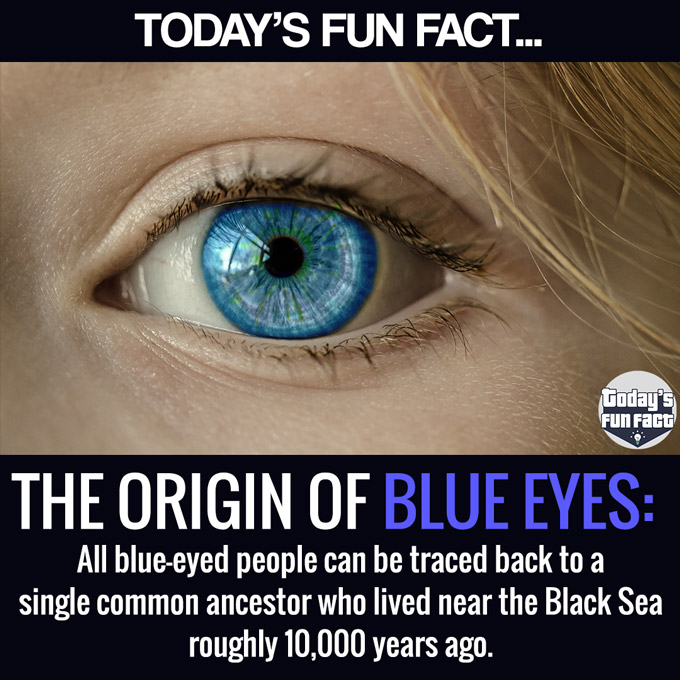
All Blue-Eyed People Can Be Traced Back To A Single Common Ancestor Graphic © todaysfunfact.com. Background photo: Pixabay (PD)
Got blue eyes? Then you’re likely related to Chris Hemsworth, Taylor Swift, Zac Efron, Reese Witherspoon, Angelina Jolie, or any other blue-eyed person you bump into.
According to research published in the journal Human Genetics by a team of researchers from the University of Copenhagen, the ancestry of the blue-eyed can be traced back to one person who lived in the northwest part of the Black Sea region in the Neolithic periods (around 10,000 years ago).
We All Had Brown Eyes
Human eyes are brown by default. This is linked to the build-up of melanin (dark skin pigment) in the iris. It all changed for blue-eyed people when a baby was born millennia ago with a little DNA blip that disrupted its ability to produce melanin in the eyes.
According to Professor Hans Eiberg, one of the researchers in the study, the blue-eye mutation arose in a gene in our chromosome known as OCA2. He explains the occurrence of variations in eye color, saying they are linked to “the amount of melanin in the iris, but blue-eyed individuals only have a small degree of variation in the amount of melanin in their eyes. From this, we can conclude that all blue-eyed individuals are linked to the same ancestor…They have all inherited the same switch at exactly the same spot in their DNA.”
But while blue eyes are a mutation, this doesn’t necessarily mean anything for our species. “It simply shows that nature is constantly shuffling the human genome, creating a genetic cocktail of human chromosomes and trying out different changes as it does so,” Dr. Eiberg notes.
More Interesting Facts You Might Not Know About Blue Eyes
• Blue eyes get their hue from the scattering and absorption of longer wavelengths of light in the melanin-deficient fibers of the iris. As a result, the more blue light comes back out. It’s the same phenomenon that makes us perceive the sky as blue.
• It’s been established that predicting a child’s blue eyes is impossible. Both parents may have the gene mutation that gives them blue eyes, but this is in no way a guarantee that the child will inherit it.
• And even when a child is born with blue eyes, they may change to a darker hue with age. Reason? It turns out the human eye can ramp up melanin production down the road. The transition from blue to other pigmented eye colors in babies often occurs within the first 3 years of life.
